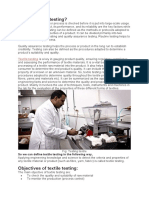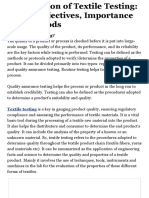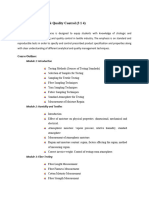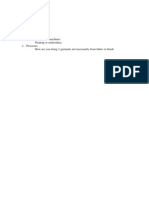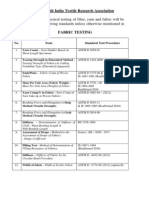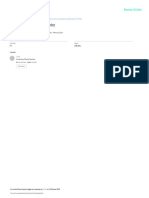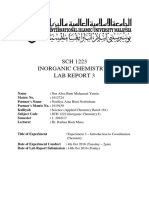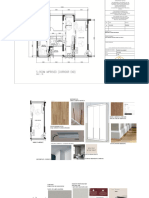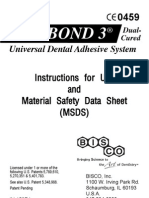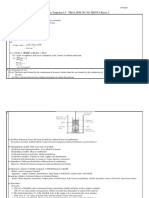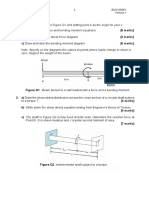Textile Testing
INTRODUCTION TO TEXTILE
�Textile Testing
Fabric testing plays a crucial role in measuring product quality and
assessing the performance of textile materials.
It provides information about the physical or structural, chemical
and performance properties of the fabrics.
Textile fabrics are manufactured for many different end uses, each
of which has different performance requirements
2
� The main reasons for testing
of textiles
Control of product,
Control of raw materials,
Process control
Analytical information
Final Product – Fabrics Sewing Thread
Shirt
Product development and research
3
� Why Textile Testing is
important ?
▪Testing is important, mainly for customer satisfaction of the
textile product
▪To ensure product quality for the market in which the textile
manufacturer competes
▪Testing is also important in order to control the manufacturing
process and cost.
4
�Two main Aspects of Quality
Control
▪Testing
▪Inspection
Testing should be accomplished by some standard methods so
that the test results can be compared.
Inspection is visual examination with respect to the
specifications
5
�Sources for standard test
methods for textiles.
▪International Standards Organization (ISO)
▪American Society for Testing and Materials (ASTM)
▪American Association for Textile Chemists and Colorists (AATCC)
▪Bureau of Indian Standards (BSI)
6
� International Standards
Organization (ISO)
The International Organization for standardization (ISO), based in Geneva, Switzerland is an
organization that serves member organizations throughout the world
◦ American National Standards Institute (ANSI)
◦ Standards Council of Canada (SCC),
◦ British Standards Institution (BSI),
◦ Standards Australia (SAA),
◦ the Bureau of Indian Standards (BIS),
◦ China State Bureau of Technical Supervision (CSBTS).
7
� American Society for Testing and
Materials (ASTM)
The purpose of this organization is to develop standards on
characteristics and performance of materials, products, systems
and services.
The standards developed by ASTM include
◦ test methods,
◦ specifications
◦ definitions
◦ usually deal with physical properties of materials.
8
�American Society for Testing and
Materials (ASTM)
For textiles, ASTM writes primarily physical-type tests such as methods
for testing the
◦ tensile strength
◦ abrasion resistance,
◦ twist determination,
◦ fibre maturity,
◦ denier and yarn count, among many others
9
�American Association for Textile
Chemists and Colorists (AATCC)
AATCC was founded to promote greater knowledge of
textile dyes and chemicals and therefore is concerned
specifically with textile products.
This organization works very closely with ASTM but writes
chemical-type tests.
AATCC sponsors scientific meetings and promotes textile
education
10
�Bureau of Indian Standards (BSI)
The Bureau of Indian Standards (BIS), the national standards body of
India, is involved in the development of technical standards (popularly
known as Indian Standards), product quality and management system
certifications and consumer affairs.
It resolves to be the leader in all matters concerning standardization,
certification and quality.
11
�Atmospheric Condition for
Testing
In order that reliable comparisons, be made among different textile
materials and products among different laboratories it is necessary to
standardize the humidity and temperature.
Conditions are
◦ 65 + 2 % RH (Relative humidity),
◦ 200 C + 20C Temperature
Before testing, samples (fabrics or garments) should be kept in
conditioning room with the above atmospheric condition for minimum
of 4 hours.
12
�Textile Testing Instrument
13
� GSM Cutter
• GSM means grams per square meter of a
knit, woven or nonwoven fabric.
• It is essential to know the weight of the
fabric before manufacturing and after
getting the finished fabric.
• The weight of the fabric by cutting the fabric
with the GSM cutter.
Procedure
Taking the sample of fabric from bulk and conditioning for 4.30 to 06
hours
↓
Taking the conditioning fabric for test on the G.S.M. cutter pad so
that no crease or crinkle is formed.
↓
Cutting the fabric with G.S.M. cutter (GSM Cutter Diameter 11.2
cm)
↓
Taking the weight of the cut fabric (Length & Width 11.2 cm) in
balance and multiply with 100.
↓ https://www.youtube.com/watch?v=rBVJYB0armg
Get the GSM of the fabric in oz/yard²
14
�Fabric_Thickness_Gauge
15
� Mechanical Properties
Tensile Tester
Tear Tester 16
� Air permeability tester
• Air permeability is an important factor in the performance of such textile materials
as gas filter, fabrics for air bags, clothing, mosquito netting, parachutes, sails,
tentage, and vacuum cleaners.
• It can also be used to provide an indication of the breathability of weather-
resistant and rainproof fabrics.
• The test method covers the measurement of the air permeability.
• The rate of air flow passing perpendicularly through a known area under a
prescribed air pressure.
How the Test Works:
A circle of fabric is clamped into the tester and
using a vacuum, the air pressure is made
different on one side of the fabric. Airflow will
occur from the side with higher air pressure,
through the
fabric, to the side with the lower air pressure.
From this rate of air flow, the air permeability
of the fabric is determined in mm/sec.
17


















